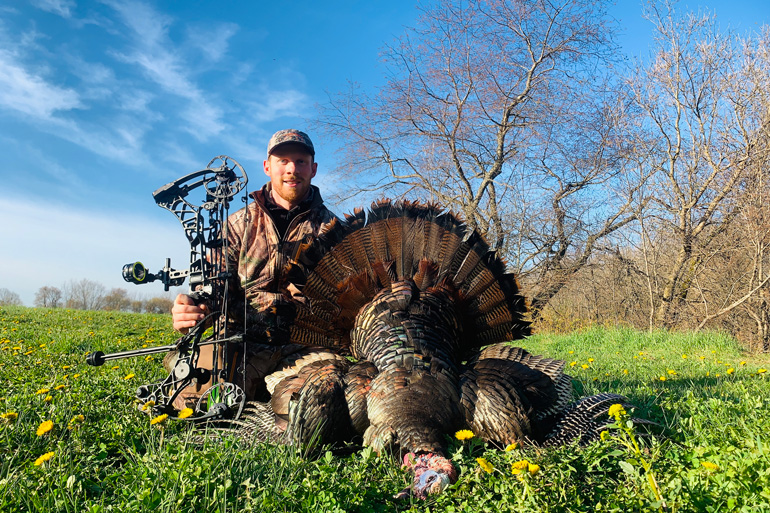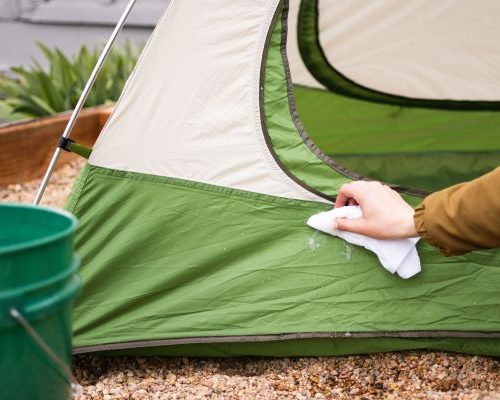Turkey hunting is a time-honored outdoor pursuit that combines elements of patience, strategy, and skill. As one of the most popular forms of hunting in North America, it offers hunters a unique challenge and an opportunity to connect with the natural world in a profound way. This article will delve into the fascinating world of turkey hunting, exploring the various aspects that make it such a cherished pastime for many enthusiasts. From the wild turkey’s natural history to hunting strategies, gear, and ethical considerations, we will provide a comprehensive guide to help both beginners and experienced hunters make the most of their turkey hunting experiences.
The Wild Turkey: A Brief Overview
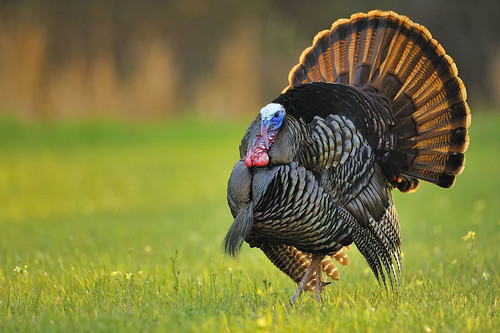
Species and Subspecies
The wild turkey (Meleagris gallopavo) is a native North American bird that belongs to the family Phasianidae, which includes pheasants and quail. Within the species, there are several subspecies, each with distinct characteristics and ranges. Some of the most well-known subspecies include the Eastern wild turkey, Osceola (Florida) turkey, Rio Grande turkey, Merriam’s turkey, and the Gould’s turkey.
Behavior and Habitat
Wild turkeys are highly adaptable birds that can be found in a variety of habitats, including forests, grasslands, and swamps. They are omnivorous, feeding on a wide range of foods such as acorns, berries, insects, and small mammals. Understanding turkey behavior is crucial for successful hunting, as it can help hunters predict their movements and locate them more effectively.
Vocalizations
Turkeys are known for their distinctive vocalizations, which play a significant role in both their social interactions and hunting strategies. The most famous of these vocalizations is the gobble of the male turkey, or tom. Hens also produce a variety of clucks and purrs. Learning to mimic these calls through various turkey calls is an essential skill for hunters.
Preparing for the Hunt
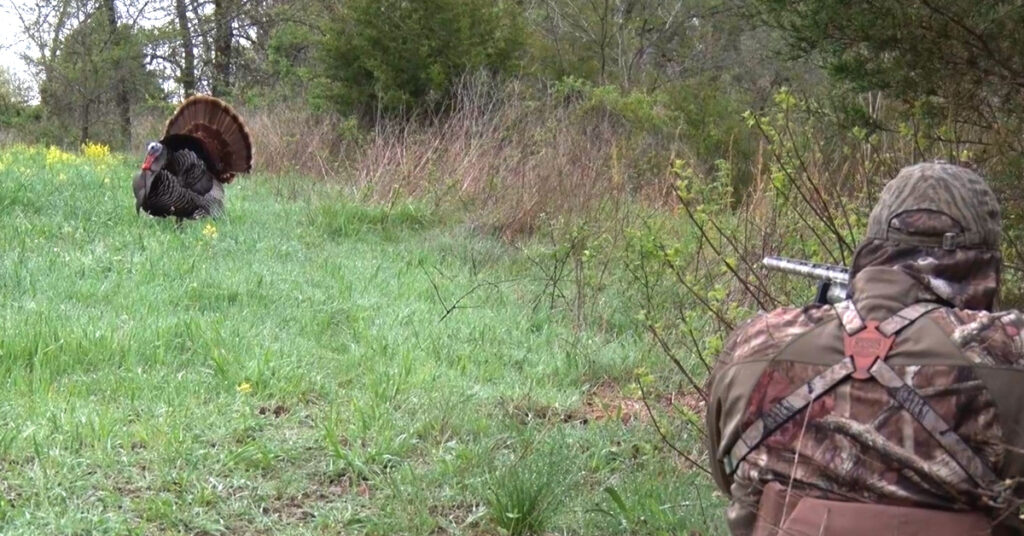
Licensing and Regulations
Before embarking on a turkey hunting adventure, it’s essential to familiarize yourself with local hunting regulations and obtain the necessary licenses and permits. These regulations typically specify hunting seasons, bag limits, and legal methods of hunting. Complying with these rules not only ensures you are hunting legally but also contributes to conservation efforts.
Safety Considerations
Safety is paramount in any hunting endeavor. Always inform someone of your hunting plans, including your expected return time and location. Wear blaze orange or other highly visible clothing when moving in the woods, and be aware of your surroundings at all times. Additionally, treat all firearms as if they are loaded and never point them in an unsafe direction.
Choosing the Right Weapon
Selecting the appropriate weapon for turkey hunting is a critical decision. Most turkey hunters use shotguns, typically in 12 or 20-gauge, with specialized turkey loads. These loads are designed to deliver a dense pattern of shot at short ranges, maximizing your chances of a clean, ethical kill. Some hunters also use archery equipment, such as compound bows, for a more challenging experience.
Essential Gear for Turkey Hunting
Clothing and Camouflage
Concealment is key in turkey hunting, as these birds have keen eyesight. Invest in high-quality camouflage clothing that matches your hunting environment. This should include a camo jacket, pants, gloves, and a facemask or headnet to break up the outline of your face. Additionally, wear comfortable and waterproof boots to keep your feet dry during long hours in the field.
Calls and Decoys
Turkey calls are essential tools for attracting birds within shooting range. There are various types of turkey calls, including box calls, slate calls, diaphragm calls, and locator calls. Each type produces different sounds that mimic turkey vocalizations. Decoys, which can be lifelike reproductions of turkeys, can help convince wary birds to approach your setup.
Blinds and Stands
A well-placed blind or tree stand can provide you with cover and concealment while waiting for turkeys to approach. Ground blinds come in various styles, from pop-up hubs to brushed-in natural blinds. Tree stands are advantageous when hunting near turkey roosts or in areas with elevated shooting positions. Choose the type of blind or stand that suits your hunting style and terrain.
Optics and Accessories
Binoculars and rangefinders are invaluable for scouting and identifying turkeys at a distance. Quality optics help you spot birds and assess their behavior without alerting them to your presence. Additionally, carry essential accessories like a turkey vest to organize your gear, extra ammunition, and a multi-tool for quick adjustments and repairs.
Scouting and Habitat
Understanding Turkey Behavior
To increase your chances of success, you must become a student of turkey behavior. Turkeys are creatures of habit, and understanding their routines and preferences can help you predict their movements. Pay attention to feeding and roosting areas, as well as travel corridors between them.
Locating Roost Sites
Turkeys roost in trees at night to avoid predators. Finding their roost sites is a crucial step in your scouting efforts. Listen for roost gobbling at dawn or use locator calls like owl hoots or crow calls to get turkeys to respond, revealing their roost locations.
Finding Feeding Areas
Turkeys spend a significant portion of their day foraging for food. Locate feeding areas by scouting for signs like scratchings, tracks, and droppings. Knowing where turkeys feed can help you set up ambush points for morning and evening hunts.
Establishing Turkey Patterns
By combining your knowledge of turkey behavior, roost sites, and feeding areas, you can begin to establish patterns. Understanding when and where turkeys are likely to be at different times of the day allows you to plan your hunts more effectively.
Strategies and Tactics
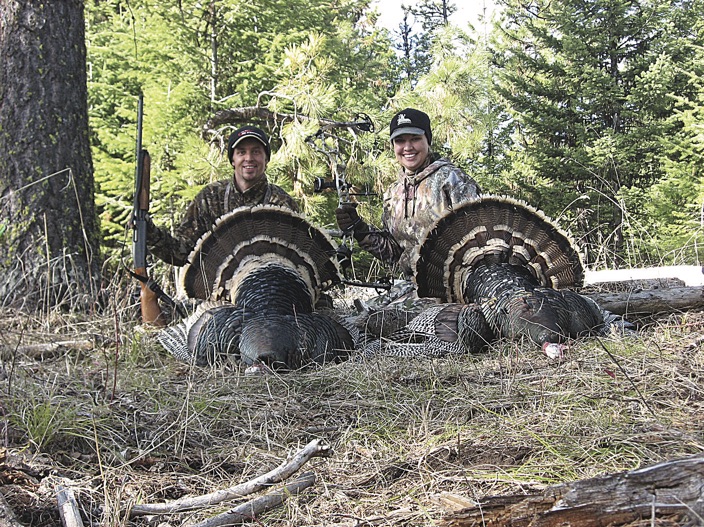
Setting Up for Success
Turkeys have excellent eyesight, so setting up in a concealed position is crucial. Use your knowledge of turkey behavior and scouting to choose a location that offers both cover and visibility. Position yourself with your back against a tree or within a blind, ensuring you can draw your weapon without being detected.
The Art of Calling
Calling is a fundamental aspect of turkey hunting. Practice various calls, such as clucks, purrs, and yelps, to replicate the sounds of turkeys. Start softly and gradually increase the volume and intensity of your calling as you gauge the birds’ response. Remember that less is often more, and it’s essential to sound like a convincing turkey.
Patiently Waiting
One of the most challenging aspects of turkey hunting is patience. After calling, be prepared to wait quietly for an extended period. Turkeys can take their time approaching, so resist the urge to call too frequently. Keep your movements slow and minimal to avoid detection.
Stalking Turkeys
Stalking is a more active approach to turkey hunting and can be effective when you can’t entice a bird into range with calling. Move cautiously, taking advantage of terrain and cover to remain hidden. Remember that stalking requires exceptional stealth and an intimate understanding of turkey behavior.
The Ethics of Turkey Hunting
Conservation and Stewardship
Ethical turkey hunting goes hand in hand with conservation and responsible stewardship of the environment. Hunters are vital contributors to wildlife management and habitat preservation efforts. By adhering to hunting regulations and practicing selective harvesting, hunters play a critical role in maintaining healthy turkey populations.
Selective Harvesting
Selective harvesting involves making ethical choices about which turkeys to harvest. Many hunters aim for mature toms, which are usually older and have larger beards and spurs. Avoid shooting young birds whenever possible to allow them to contribute to the breeding population.
Respect for Wildlife and Fellow Hunters
Respect for wildlife and fellow hunters is non-negotiable. Always follow the principles of fair chase, which dictate that hunters should not engage in activities that give them an unfair advantage over the game. Be considerate of other hunters and non-hunters in the area, and strive to leave no trace of your presence.
Field Dressing and Processing
Field Dressing a Turkey
After a successful hunt, it’s essential to field dress your turkey promptly to ensure the meat remains in prime condition. Field dressing involves removing the internal organs and feathers, leaving you with the breast, thighs, and drumsticks. Use a sharp knife and follow proper techniques to preserve the quality of the meat.
Meat Handling and Cooking Tips
Turkey meat is lean and flavorful, making it a versatile ingredient in various recipes. Whether you’re grilling, roasting, or smoking, there are numerous ways to prepare turkey. Keep in mind that proper handling and cooking techniques are essential to prevent foodborne illnesses. Store and cook the meat to recommended temperatures to ensure it is safe to eat.
Turkey Hunting Season
The timing of turkey hunting season can vary widely depending on your location, the species of turkey you’re pursuing, and the regulations set by your state or province. While there is some variation, we can outline the most common turkey hunting seasons in North America. It’s crucial to remember that specific dates and regulations may change from year to year, so always check with your local wildlife agency for the most up-to-date information.
Spring Turkey Hunting Season:
Spring turkey hunting season is the most popular and widely recognized turkey hunting season in North America. It offers hunters the opportunity to pursue toms (male turkeys) during their breeding season when they are actively gobbling and seeking hens (female turkeys).
Key features of the spring turkey hunting season include:
- Timing: Spring turkey hunting season typically begins in late March or early April and can extend into May or even June in some states and provinces. The timing varies depending on the location, with warmer southern states having earlier seasons compared to northern regions.
- Gobbling Activity: Spring is the breeding season for turkeys, and toms are highly vocal during this time. They gobble to attract hens and establish dominance among other males. This makes it an excellent time for hunters to use turkey calls to locate and lure in birds.
- Hunting Methods: During the spring season, hunters often employ calling techniques to mimic hen sounds and lure toms closer. Using decoys is also common, as they can attract curious toms looking for a mate.
- Camouflage: Spring foliage can provide excellent cover for hunters, but it’s essential to wear appropriate camouflage clothing that matches the specific environment. As vegetation starts to green up, hunters often transition to leafy camouflage patterns.
Fall Turkey Hunting Season:
Fall turkey hunting season is less common than spring hunting but still provides a unique and challenging experience. During the fall, hunters target flocks of turkeys as they prepare for winter and their fall migration.
Key features of the fall turkey hunting season include:
- Timing: Fall turkey hunting season usually begins in September or October, depending on the location. It can extend into late November or December in some areas.
- Mixed Flocks: In the fall, turkeys gather in flocks, including both males and females. Unlike the spring season, toms are generally less vocal and less responsive to calling.
- Scouting: Successful fall turkey hunting often involves scouting to locate flocks’ feeding areas, roosting sites, and travel routes. Finding where turkeys are congregating is crucial.
- Hunting Methods: Hunters in the fall often use a scattergun approach, attempting to disperse a flock and then targeting individual birds as they regroup. Some hunters may use calls to mimic the sounds of lost birds or feeding turkeys to attract flock members.
- Camouflage: Fall foliage can vary significantly, so hunters may need a range of camouflage patterns to blend effectively into changing landscapes.
Regulations and Licensing:
Turkey hunting regulations and licensing requirements vary by state, province, and even within specific wildlife management units. Some states and provinces may offer separate spring and fall turkey hunting seasons, while others may have a combined season. Regulations may dictate bag limits (the number of turkeys you can harvest), legal hunting methods (e.g., shotgun, archery, crossbow), permitted hunting hours, and specific rules for youth hunters and disabled hunters.
It’s essential to consult your local wildlife agency or the specific hunting regulations guide for your area to understand the specific dates, bag limits, and any special rules or restrictions that apply to turkey hunting in your region. Staying informed and abiding by these regulations is crucial for ethical and lawful hunting.
In conclusion, turkey hunting season in North America offers both spring and fall opportunities for hunters to pursue these iconic game birds. Each season presents its own unique challenges and rewards, from the vocal excitement of spring to the flock dynamics of fall. Whether you’re an experienced turkey hunter or a newcomer to the sport, always prioritize safety, ethical hunting practices, and compliance with local regulations to ensure a successful and enjoyable hunting experience.
Turkey hunting do’s and don’ts
Turkey hunting, like any other form of hunting, requires ethical and responsible practices to ensure both the safety of hunters and the conservation of turkey populations. Here are some essential do’s and don’ts for turkey hunting:
Do’s:
- Observe All Hunting Regulations: Familiarize yourself with local, state, and federal hunting regulations, including season dates, bag limits, and legal methods of hunting. Comply with these regulations at all times.
- Practice Safe Firearm Handling: Treat every firearm as if it’s loaded, keep the muzzle pointed in a safe direction, and keep your finger off the trigger until you’re ready to shoot. Ensure that your firearm is in good working condition.
- Wear Blaze Orange or Other Visible Clothing: During fall turkey hunting seasons, and when moving in the woods, wear blaze orange or another highly visible color to make yourself visible to other hunters.
- Identify Your Target: Be absolutely certain of your target and what lies beyond it before taking a shot. Never shoot at a movement, sound, or vague silhouette.
- Use Proper Turkey Calls: Learn to use turkey calls effectively. Practice calling techniques and mimic the sounds of turkeys accurately. This will help attract birds within range.
- Scout and Learn Turkey Behavior: Spend time scouting before the season to understand turkey behavior, locate roost sites, feeding areas, and travel patterns. This knowledge is crucial for setting up in the right spot.
- Set Up Concealed and Safely: When you choose your hunting spot, ensure you’re well-concealed and have a clear line of sight. Use natural blinds or camouflaged hunting blinds to break up your outline.
- Be Patient: Turkey hunting often requires a great deal of patience. Wait quietly and avoid unnecessary movement to avoid spooking turkeys.
- Report Poaching and Violations: If you witness illegal hunting activities or poaching, report them to the appropriate authorities. Poaching undermines conservation efforts and threatens wildlife populations.
Don’ts:
- Don’t Neglect Safety: Safety should always be your top priority. Never take shortcuts when it comes to firearm safety, and never compromise on visibility to other hunters.
- Don’t Overcall: Avoid excessive calling. Overcalling can make turkeys wary and less likely to approach. Use calls sparingly and realistically.
- Don’t Stalk Turkeys Without a Plan: Stalking turkeys can be risky. If you choose to stalk, do so with extreme caution and always have a clear shot and safe backdrop.
- Don’t Shoot at Unidentified Sounds or Movement: Just because you hear a noise or see movement doesn’t mean it’s a turkey. Identify your target positively before taking a shot.
- Don’t Trespass: Respect property boundaries and always obtain permission from landowners before hunting on private land. Trespassing is illegal and unethical.
- Don’t Shoot Hens During Spring Season: In many areas, it’s against the regulations to harvest hens during the spring turkey hunting season. Be sure to identify your target correctly.
- Don’t Litter: Always pack out everything you bring into the field, including trash. Leave no trace of your presence.
- Don’t Ignore Ethics and Respect for Wildlife: Maintain ethical hunting practices, which include following fair chase principles, not harassing wildlife, and ensuring quick, humane kills.
- Don’t Hunt While Intoxicated: Alcohol and hunting do not mix. Never hunt under the influence of drugs or alcohol, as it impairs judgment and safety.
By adhering to these do’s and don’ts, turkey hunters can enjoy a safe, responsible, and ethical hunting experience while contributing to the conservation of these magnificent birds. Remember that hunting is a privilege, and it’s essential to act as stewards of the land and wildlife, preserving the tradition for future generations.
Tips and Tactics
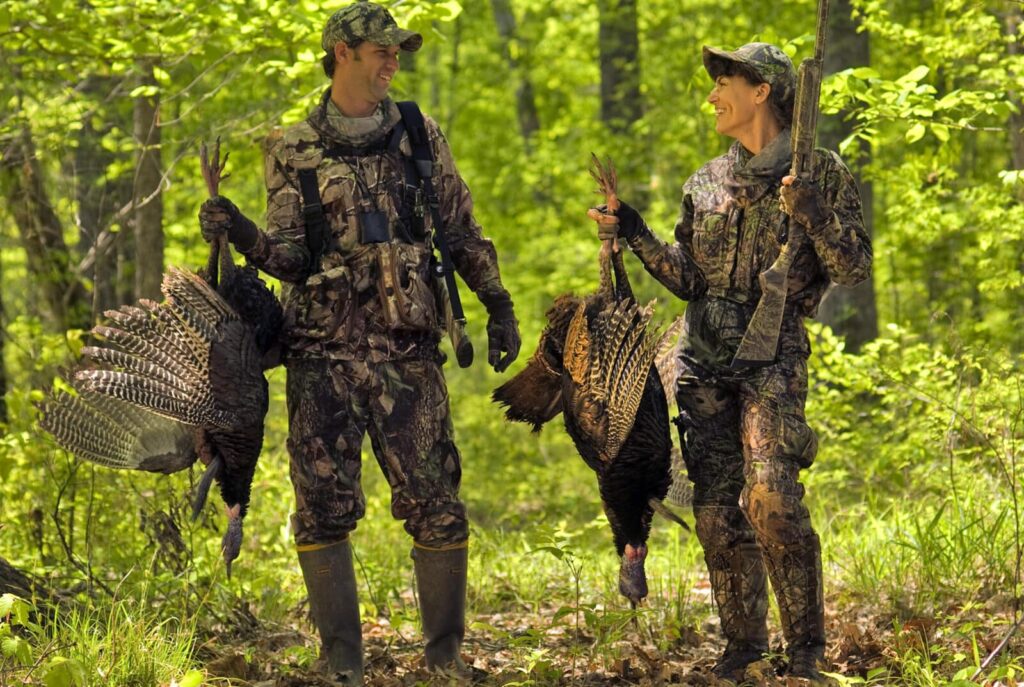
Turkey hunting can be a challenging and rewarding outdoor pursuit. To improve your chances of success, here are some essential turkey hunting tips and tactics:
Learn Turkey Behavior:
Understanding turkey behavior is crucial. Learn about their daily routines, roosting locations, feeding patterns, and breeding behavior. Knowing when and where they are active will help you plan your hunt.
Scouting:
Scouting is key to a successful turkey hunt. Spend time in the field before the season to locate turkey sign, such as tracks, droppings, feathers, and scratching. Identify roost trees and feeding areas.
Concealment:
Turkeys have excellent eyesight. Wear full camouflage clothing, including gloves, facemask, and head covering. Sit against a tree or use a well-designed ground blind to break up your outline.
Decoys:
Decoys can be highly effective. Use realistic turkey decoys to attract toms within shooting range. Position them strategically in your setup, making sure they are visible to approaching birds.
Turkey Calls:
Learn how to use turkey calls effectively. Practice various calls, including yelps, clucks, purrs, and gobbles. Start softly and increase the intensity as needed. Use calls sparingly and realistically.
Set Up Properly:
Choose your hunting spot carefully. Position yourself with a clear line of sight and a backdrop that ensures a safe shot. Sit with your back against a tree or inside a blind. Keep movement to a minimum.
Patience is Key:
Be patient. Turkeys may take their time approaching your setup. Avoid overcalling or making abrupt movements that could spook them. Sometimes, waiting silently is the best tactic.
Use Locator Calls:
Locator calls, like owl hoots, crow calls, or woodpecker imitations, can be used to elicit shock gobbles from toms at dawn. This helps you locate roosted birds.
Hunt All Day:
Don’t limit your hunting to just the early morning hours. Turkeys are active throughout the day, so consider staying in the field longer. Mid-morning and early afternoon hunts can be productive.
Know When to Move:
If a tom is not approaching, and you’re confident that it’s not coming your way, consider repositioning yourself quietly to get closer or cut it off.
Don’t Move Too Much:
Turkeys have sharp eyes. If you need to adjust your position, do so slowly and during a moment when the turkey is not looking your way.
Learn from Unsuccessful Hunts:
Not every hunt will be successful. Use each experience as an opportunity to learn. Analyze what went wrong and adjust your tactics accordingly.
Use a Shotgun with the Right Choke and Ammo:
A shotgun with a tight choke and specialized turkey loads is essential for delivering a dense pattern of shot. Aim for the head and neck area for a clean kill.
Practice Shooting:
Before the season, practice shooting from various positions and distances to become proficient with your shotgun.
Respect Ethical Hunting Practices:
Follow ethical hunting principles, including fair chase, selective harvesting, and respect for the environment and other hunters. Leave no trace of your presence in the field.
Stay Safe:
Safety is paramount. Always let someone know your hunting plans, wear blaze orange while moving, and treat every firearm as if it’s loaded.
Remain Flexible:
Turkeys can be unpredictable. Be prepared to adapt to changing conditions and adjust your tactics accordingly.
Stay Quiet and Still:
Movement and noise are your enemies when turkey hunting. Turkeys have excellent hearing, so avoid unnecessary sounds and sudden movements.
Learn from Experienced Hunters:
If you’re new to turkey hunting, consider learning from experienced hunters or hiring a guide. Their knowledge and experience can be invaluable.
Practice, Practice, Practice:
Like any skill, turkey hunting takes practice. Spend time in the woods, learn from your experiences, and continually improve your skills.
Turkey hunting can be a challenging but incredibly rewarding pursuit. By applying these tips and tactics, you can increase your chances of a successful and enjoyable turkey hunting season. Remember that patience, practice, and a deep understanding of turkey behavior are keys to success in this exciting outdoor activity.
In Conclusion
Turkey hunting is not just a sport but an immersive and challenging outdoor pursuit that connects hunters with the natural world. By understanding turkey behavior, mastering hunting strategies, and following ethical principles, hunters can enjoy the rewards of this age-old tradition while contributing to wildlife conservation efforts. Remember always to prioritize safety, respect for the environment, and a deep appreciation for the wild turkey, ensuring a future filled with successful hunts and memorable experiences in the great outdoors.
